Clear-Cutting: Economic and Environmental Impacts Explained
- September 23, 2024
- 0 comment
Clear-cutting, the widespread removal of entire forest areas in a single operation, has sparked considerable debate for many years. Proponents point to its economic advantages, particularly for sectors like agriculture and timber, which benefit from the efficient land use and resource extraction it enables.

However, critics emphasize the significant environmental damage it causes, including deforestation, loss of biodiversity, and disruption of ecosystems, as well as the long-term economic costs associated with these impacts. Understanding the full scope of clear-cutting requires examining not only its short-term economic gains but also its far-reaching social, ecological, and climate-related consequences.
Table of Contents:
- The Economic Rationale Behind Clear-Cutting
- The Environmental Cost of Clear-Cutting
- Economic Costs of Environmental Degradation
- The Global Demand for Agriculture and Its Role in Clear-Cutting
- Clear-Cutting and Climate Change
- Impact on Water Resources
- Loss of Biodiversity
- Social and Cultural Impacts of Clear-Cutting
- Reforestation and Sustainable Alternatives
- The Role of Governments and Policy in Managing Clear-Cutting
What is Clear-Cutting?
Clear-cutting is a logging practice in which nearly all trees in a particular area are cut down, leaving the land essentially barren. This method is favored by industries because of its efficiency in harvesting timber, but it has profound consequences for the environment and local ecosystems.
- Complete Forest Removal: Clear-cutting involves removing all trees in a specific area at once, leaving the land bare and drastically altering the landscape.
- Industrial Logging Method: It is commonly used by industries like timber and agriculture to efficiently harvest large amounts of wood or prepare land for farming.
- Habitat Destruction: This practice wipes out entire ecosystems, destroying habitats for numerous plant and animal species, leading to biodiversity loss.
- Soil and Water Disruption: Clear-cutting can cause soil erosion and disrupt natural water cycles, increasing the risk of flooding and reducing water quality in surrounding areas.
- Climate Impact: By cutting down trees, clear-cutting releases stored carbon dioxide into the atmosphere, contributing to climate change and global warming.
By eliminating vast expanses of trees in a single operation, clear-cutting maximizes short-term yields. However, it simultaneously disrupts wildlife habitats, alters water cycles, and contributes to soil erosion. Furthermore, clear-cutting’s role in deforestation is closely linked to broader issues like climate change, as trees act as crucial carbon sinks, absorbing carbon dioxide from the atmosphere.
The Economic Rationale Behind Clear-Cutting
Clear-cutting, at first glance, offers significant economic incentives. For industries involved in agriculture, timber, and paper production, removing large sections of forest allows for more efficient land use. Specifically, deforested areas are often converted into agricultural land, which is then used for industrial farming of commodities such as soy, palm oil, and cattle.
| Factor | Short-Term Economic Benefit | Long-Term Economic Cost |
|---|---|---|
| Timber Revenue | High initial profit from timber sales. | Depletes future timber supply, reducing long-term revenue. |
| Agricultural Land Conversion | Increases available land for agriculture, boosting crop yields. | Soil fertility decreases over time, leading to reduced agricultural productivity. |
| Job Creation | Creates jobs in logging and land conversion industries. | Jobs decline as forests are depleted and land becomes less productive. |
| Export Opportunities | Boosts export of timber and agricultural commodities. | Reduced biodiversity and environmental damage may hurt tourism and future trade opportunities. |
| Infrastructure Costs | Lower initial infrastructure development costs for logging operations. | Higher costs for repairing environmental damage (floods, erosion) and restoring ecosystems. |
In the short term, clear-cutting reduces the cost of logging by simplifying operations and improving access to valuable timber. These economic benefits are particularly enticing for developing countries that rely heavily on natural resource extraction for economic growth. For these nations, clear-cutting offers a means of boosting GDP, creating jobs, and generating revenue through exports.
The Environmental Cost of Clear-Cutting
While the economic rationale might appear sound, the environmental consequences of clear-cutting are far-reaching and, in many cases, irreversible. One of the most immediate effects of clear-cutting is the destruction of biodiversity. Forest ecosystems are home to countless species, many of which are threatened or endangered. By removing their habitats, clear-cutting contributes to a significant loss of biodiversity.
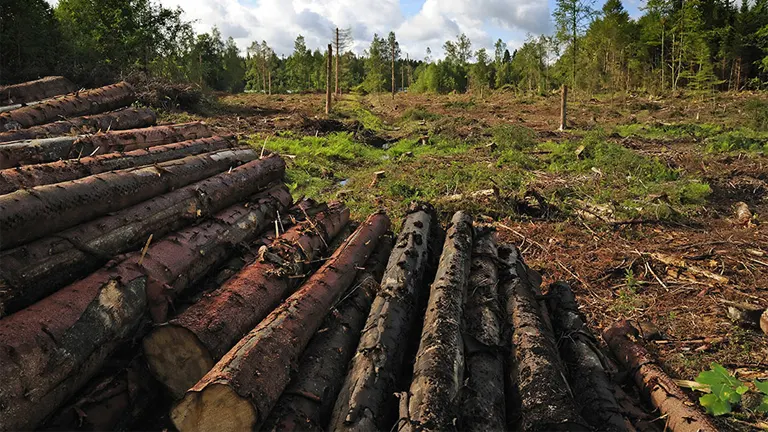
Clear-cutting also leads to deforestation, which has profound effects on the global climate. Forests play a crucial role in sequestering carbon, reducing the amount of greenhouse gases in the atmosphere. When forests are cleared, not only is this carbon sink removed, but the carbon stored in the trees is released back into the atmosphere, exacerbating global warming.
| Environmental Factor | Short-Term Impact | Long-Term Consequence |
|---|---|---|
| Deforestation | Rapid removal of forests for land use. | Permanent loss of forest cover and biodiversity. |
| Carbon Emissions | Immediate release of stored carbon dioxide. | Contributes to global warming and climate change. |
| Soil Erosion | Loss of trees leads to exposed soil. | Degraded soil quality, increased landslide and flood risks. |
| Water Cycle Disruption | Altered local water retention and drainage. | Reduced groundwater levels, leading to droughts and water scarcity. |
| Biodiversity Loss | Habitat destruction displaces wildlife. | Extinction of species, reduced ecosystem resilience. |
In addition to contributing to climate change, deforestation disrupts water cycles. Trees play an important role in regulating the flow of water through an ecosystem, by absorbing rainfall and releasing water vapor into the atmosphere. Without forests, regions can experience more severe droughts, floods, and other water-related issues.
Economic Costs of Environmental Degradation
While the initial economic gains of clear-cutting may seem lucrative, the long-term economic costs of environmental degradation often outweigh the short-term benefits. For instance, clear-cutting leads to soil erosion, which can render land infertile and unsuitable for agriculture. In cases where deforested areas are converted into agricultural land, the soil’s reduced fertility can lead to decreased crop yields over time, undermining the economic benefits of land conversion.
Furthermore, clear-cutting increases the risk of natural disasters like floods and landslides. The removal of trees, which act as natural barriers against these events, leaves areas more vulnerable to damage. The economic cost of repairing infrastructure and restoring communities after these disasters can be astronomical.
- Reduced Agricultural Productivity:
Soil erosion and loss of fertility make land less productive over time, lowering crop yields and decreasing long-term agricultural profitability. - Increased Disaster Costs:
Clear-cutting raises the risk of floods, landslides, and other natural disasters, leading to higher spending on disaster recovery and infrastructure repairs. - Loss of Ecosystem Services:
Forests provide essential services like water filtration, carbon sequestration, and air purification. Their loss leads to increased costs for artificial replacements or damage control. - Declining Tourism Revenue:
Deforestation harms natural landscapes and biodiversity, reducing ecotourism potential and leading to fewer economic opportunities for local communities reliant on tourism. - Health Costs:
Environmental degradation often leads to air and water pollution, contributing to public health issues that increase medical expenses and reduce workforce productivity. - Long-Term Loss of Timber Resources:
While clear-cutting initially boosts timber sales, unsustainable practices lead to resource depletion, reducing future economic opportunities in the forestry sector.
Clear-cutting also affects local communities, particularly those that depend on forests for their livelihoods. Indigenous groups, for example, often rely on forests for food, shelter, and cultural practices. The destruction of their environment leads to displacement and economic hardships, further increasing the human and social costs associated with clear-cutting.
The Global Demand for Agriculture and Its Role in Clear-Cutting
Clear-cutting is closely tied to the global demand for agriculture, particularly industrial-scale farming. Large areas of forests are often cleared to make way for agricultural commodities such as palm oil, soy, and cattle ranching. These industries, driven by global consumer demand, have contributed to the expansion of clear-cutting practices, particularly in tropical regions like the Amazon rainforest and Southeast Asia.
| Agricultural Commodity | Demand Impact | Clear-Cutting Consequence |
|---|---|---|
| Soy Production | High global demand for livestock feed. | Large-scale deforestation, particularly in South America. |
| Palm Oil | Widely used in food and cosmetics industries. | Massive forest clearing in Southeast Asia for plantations. |
| Cattle Ranching | Rising demand for beef and dairy products. | Expansion of pastureland, especially in the Amazon rainforest. |
| Biofuels | Growing need for alternative energy sources. | Forest land converted to grow biofuel crops like corn and sugarcane. |
| Timber and Paper Products | Increased global consumption of wood products. | Clear-cutting for timber extraction and pulp production. |
The growth of industrial agriculture presents a dilemma: while it provides economic benefits in the form of food production and exports, it simultaneously accelerates deforestation and environmental degradation. The challenge lies in finding a balance between meeting global food demand and protecting the planet’s ecosystems.
Clear-Cutting and Climate Change
One of the most significant environmental impacts of clear-cutting is its contribution to climate change. Forests act as carbon sinks, absorbing and storing carbon dioxide from the atmosphere. When trees are removed through clear-cutting, the carbon stored in them is released back into the atmosphere, contributing to the greenhouse effect.
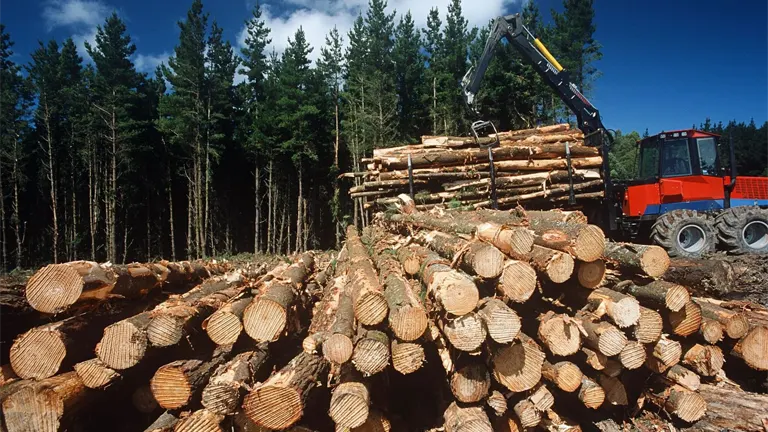
| Climate Factor | Clear-Cutting Impact | Climate Change Consequence |
|---|---|---|
| Carbon Sequestration Loss | Trees removed, reducing ability to absorb CO2. | Increased atmospheric carbon, accelerating global warming. |
| Carbon Emissions | Stored carbon in trees released when cut down. | Direct increase in greenhouse gas emissions. |
| Disrupted Water Cycles | Loss of tree cover alters regional water cycles. | Higher risks of droughts and extreme weather events. |
| Soil Degradation | Erosion releases more carbon from the soil. | Loss of soil productivity and further carbon release. |
| Biodiversity Loss | Destruction of forests reduces ecosystem resilience. | Reduced ability of ecosystems to adapt to climate change. |
In addition to releasing stored carbon, clear-cutting disrupts the natural processes that regulate the Earth’s climate. Trees play a crucial role in regulating temperatures and water cycles. Without them, regions can experience more extreme weather conditions, including hotter temperatures, more frequent droughts, and increased rainfall.
Impact on Water Resources
Clear-cutting also has a significant impact on water resources. Forests help regulate the flow of water in an ecosystem by absorbing rainfall and releasing water vapor through a process known as transpiration. When trees are removed, this natural water regulation system is disrupted, leading to increased runoff, reduced groundwater levels, and altered river flows.
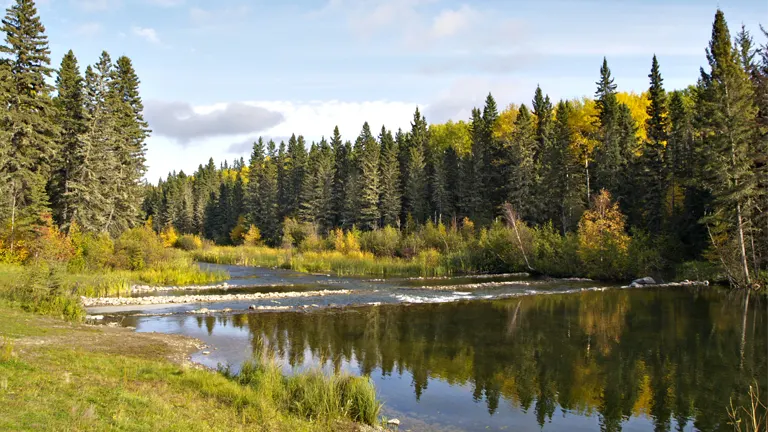
- Increased Runoff:
Without trees to absorb rainfall, more water runs off the land, leading to higher risks of flooding and soil erosion. - Reduced Groundwater Recharge:
Clear-cutting disrupts the natural process of water seeping into the ground, decreasing groundwater levels and contributing to water shortages. - Altered Stream Flows:
Forest removal can lead to irregular stream flows, causing either drought-like conditions or more frequent flash floods in surrounding areas. - Degraded Water Quality:
Increased runoff carries more sediment and pollutants into rivers and lakes, degrading water quality and harming aquatic ecosystems.
This disruption can have severe consequences for both local communities and ecosystems. Reduced groundwater levels can lead to water shortages, while increased runoff can result in more frequent and severe flooding. In some cases, deforestation can even cause rivers and lakes to dry up entirely, further exacerbating water scarcity issues.
Loss of Biodiversity
Clear-cutting is one of the leading causes of biodiversity loss. Forests are home to a wide variety of plant and animal species, many of which are not found anywhere else on Earth. When forests are cleared, these species lose their habitats, leading to population declines and, in some cases, extinction.
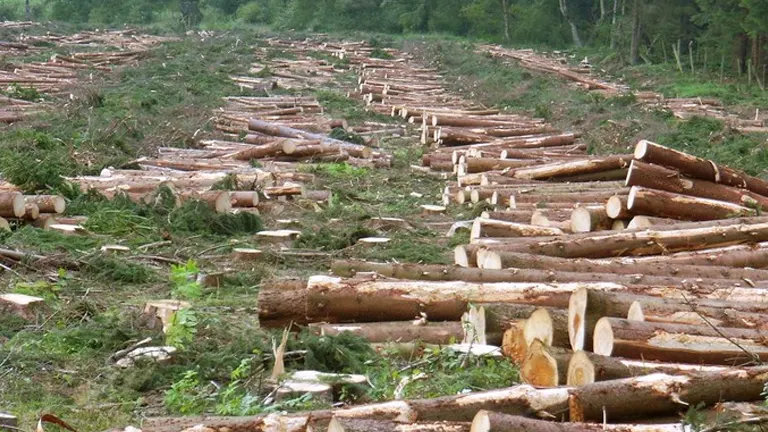
Biodiversity is crucial for maintaining healthy ecosystems. Different species play specific roles within an ecosystem, and the loss of one species can have a ripple effect on others. For example, the loss of predator species can lead to an increase in prey populations, which can then overgraze and damage plant life. This, in turn, affects other species that rely on those plants for food and shelter.
Social and Cultural Impacts of Clear-Cutting
Beyond its environmental and economic impacts, clear-cutting also has significant social and cultural consequences, particularly for indigenous communities. Many indigenous peoples live in or near forests and rely on them for their livelihoods, food, shelter, and cultural practices. Clear-cutting destroys these forests, often forcing indigenous peoples to leave their homes and relocate to areas where they may not have the resources or knowledge to sustain their way of life.
| Impact Area | Clear-Cutting Effect | Social and Cultural Consequence |
|---|---|---|
| Indigenous Displacement | Forests cleared, forcing communities to relocate. | Loss of traditional lands, culture, and livelihoods. |
| Loss of Ecosystem Services | Destruction of resources like food and medicine. | Communities face shortages of vital resources and income. |
| Conflict Over Land Use | Competing interests between industry and locals. | Increased tensions and conflicts between local communities and corporations. |
| Cultural Heritage Destruction | Sacred sites and cultural landmarks are destroyed. | Erosion of cultural identity and heritage. |
In addition to displacement, clear-cutting can also lead to conflicts between local communities and industries. In some cases, these conflicts escalate into violence, with communities protesting against the destruction of their lands and industries defending their operations in the name of economic growth.
Reforestation and Sustainable Alternatives
While the damage caused by clear-cutting can be severe, there are solutions that can help mitigate its impact. Reforestation, the process of replanting trees in areas that have been cleared, is one way to restore ecosystems and reduce the carbon released by deforestation. However, reforestation efforts can take decades to bear fruit, as young trees take time to grow and establish themselves.
- Reforestation Efforts:
Planting new trees in deforested areas helps restore ecosystems, absorb carbon dioxide, and promote biodiversity, though it takes decades for full recovery. - Selective Logging:
This method involves cutting only certain trees, preserving the forest structure and minimizing environmental damage while still allowing for timber harvesting. - Agroforestry:
Combining trees with agriculture, agroforestry maintains forest cover while producing crops, supporting both biodiversity and sustainable land use. - Forest Stewardship:
Certified sustainable forestry practices focus on long-term ecosystem health, ensuring forests can regenerate and continue providing resources without widespread destruction.
Sustainable forestry practices, such as selective logging and agroforestry, offer alternatives to clear-cutting that minimize environmental damage while still providing economic benefits. These methods involve harvesting trees in a way that allows forests to regenerate naturally, ensuring that ecosystems remain intact and biodiversity is preserved.
The Role of Governments and Policy in Managing Clear-Cutting
Governments play a crucial role in managing clear-cutting and its impacts. By implementing policies that regulate deforestation and promote sustainable land use, governments can help protect forests and reduce the environmental and economic costs associated with clear-cutting. For example, policies that require companies to adhere to sustainable forestry practices can reduce the need for clear-cutting while still allowing industries to benefit from timber and agricultural resources.
- Enforcing Deforestation Regulations:
Governments can implement and enforce laws to limit clear-cutting and ensure sustainable land use practices. - Promoting Sustainable Forestry:
Policies that encourage selective logging, reforestation, and certified sustainable forestry practices help balance economic and environmental needs. - Incentivizing Conservation:
Providing financial incentives for landowners and businesses to preserve forests can reduce the pressure to clear-cut for short-term profits. - Supporting Indigenous Rights:
Protecting the land rights of indigenous communities helps safeguard forests from unsustainable deforestation practices. - International Cooperation:
Governments can participate in global agreements, like the Paris Agreement, to commit to reducing deforestation and addressing climate change. - Funding Reforestation Projects:
Public investments in reforestation initiatives help restore damaged ecosystems, improve carbon sequestration, and promote long-term sustainability.
International agreements, such as the Paris Agreement, also play a role in addressing deforestation. By setting targets for reducing greenhouse gas emissions, these agreements encourage countries to preserve their forests and invest in reforestation efforts.
Conclusion
The true cost of clear-cutting extends far beyond the immediate economic benefits. While clear-cutting may provide short-term gains for industries and economies, the long-term environmental and social costs are substantial. Biodiversity loss, climate change, and the displacement of indigenous communities are just a few of the many consequences of this practice.
To address these issues, a more holistic approach is needed—one that balances economic development with environmental sustainability. By investing in reforestation, adopting sustainable forestry practices, and implementing stronger regulations, we can begin to mitigate the damage caused by clear-cutting and protect the planet for future generations.
Frequently Asked Questions (FAQs)
- What is clear-cutting?
Clear-cutting is a logging practice where all trees in a designated area are removed at once. It is primarily used for efficient timber extraction and land conversion, but it has significant environmental consequences. - Why is clear-cutting used by industries?
Industries like agriculture and timber use clear-cutting because it allows for quick access to resources and converts forested land into space for farming or development, offering short-term economic benefits. - What are the environmental impacts of clear-cutting?
Clear-cutting leads to deforestation, habitat destruction, loss of biodiversity, soil erosion, and disruption of water cycles, contributing to long-term environmental degradation. - How does clear-cutting affect climate change?
Forests act as carbon sinks, absorbing carbon dioxide. When trees are clear-cut, this carbon is released, increasing greenhouse gas emissions and contributing to global warming. - Does clear-cutting have economic drawbacks?
While clear-cutting offers initial economic gains, long-term costs include reduced soil fertility, increased risk of natural disasters like floods, and the loss of ecosystem services that forests provide. - How does clear-cutting impact local communities?
Clear-cutting can displace indigenous and local communities that rely on forests for their livelihoods, leading to social and economic hardships, loss of cultural heritage, and conflicts over land use. - What role does agriculture play in clear-cutting?
Clear-cutting is often driven by the demand for agricultural commodities like soy, palm oil, and cattle ranching, leading to large-scale deforestation, especially in tropical regions. - Are there alternatives to clear-cutting?
Sustainable forestry practices, such as selective logging and agroforestry, offer alternatives that allow for timber harvesting without destroying entire ecosystems, balancing economic needs with environmental preservation. - Can reforestation help mitigate the impacts of clear-cutting?
Reforestation, or planting trees in deforested areas, can restore ecosystems and help absorb carbon dioxide, but it is a slow process that takes decades to achieve significant results. - How can governments regulate clear-cutting?
Governments can implement policies promoting sustainable land use, regulate deforestation, and encourage practices like reforestation to reduce the environmental damage caused by clear-cutting. International agreements can also help curb deforestation.
We hope this guide has clarified the true economic and environmental costs of clear-cutting. Have experiences with deforestation or ideas to reduce its impact? Share your thoughts below and inspire others to support sustainable forestry. Don’t forget to share this guide with those dedicated to preserving our forests and promoting a sustainable future for all.

Edward Smith
Forestry AuthorWoodworking is about more than crafting; it's a harmonious connection with nature, mastering tools, and preserving our environment. I'm here to share my knowledge and experiences with you, forging a future where we can embrace wood's beauty and utility while safeguarding our forests' health and diversity.

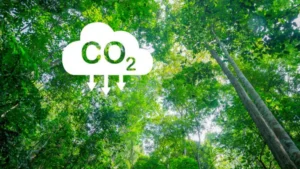
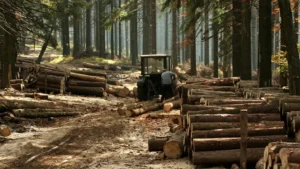
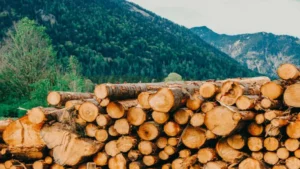


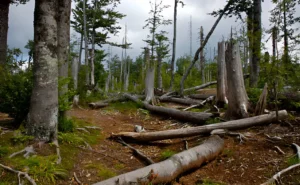
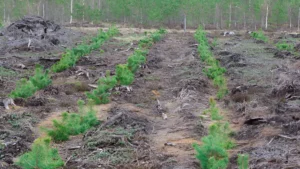

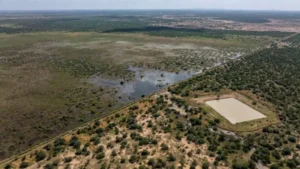
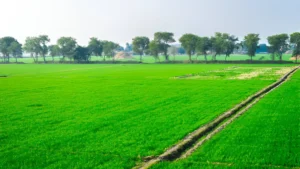


Leave your comment